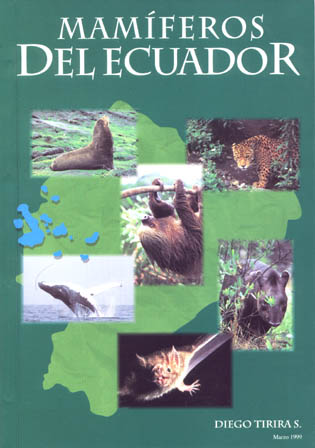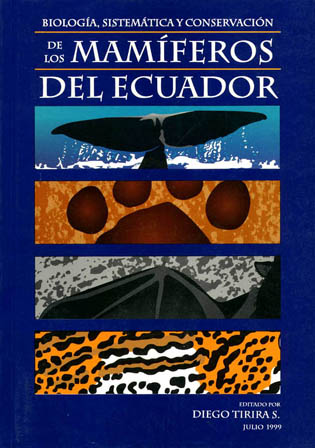

BOOK DESCRIPTION


Eumops glaucinus Bradypus variegatus
This book is a synthesis of the knowledge accumulated by a team of mammalogists, presented in a single tome all the available information about Ecuadorian mammals. It includes: an introduction to mammals; a historical summary of the mammalogy in Ecuador; a discussion of the diversity and characteristics of all orders and families; a checklist of scientific and common names (in Spanish and English); and information on the geographical distribution of the 369 species known to occur in Ecuador. A identification guide is also tools are provided, including identification keys (in Spanish and English), dental formulas, a guide to the tracks of terrestrial mammals, and drawings and color photos of about 40% of the species. Also presented are a bibliography of more than 760 references of books and publications related directly or indirectly to the study of Ecuadorian mammals, an analysis of existing scientific collections, a list of threatened and protected species, a list of endemic mammals, and a list of museums that hold information on Ecuadorian mammals.


Lagothrix lagotricha Mazama rufina
The book is tailored to professionals, researchers, and students of biology and similar sciences, together with naturalist guides, tourists, and anyone that is interested in the fauna of Ecuador. Given the amount of information in this book and the faunal similarities between Ecuador and the other countries of the Amazon Basin and the Andes, this book will certainly be useful in most of South America.
This book is a pioneering work and the most inclusive treatise on Ecuadorian mammals that has been published to date.


Tapirus terrestris Pteronura brasiliensis
![]()

BIOLOGY, SISTEMATICS AND CONSERVATION OF THE MAMMALS OF ECUADOR Edited by Diego Tirira S. 2nd edition (July, 1999) Society for the Research and Monitoring of Ecuadorian Biodiversity (Simbioe)
BOOK DESCRIPTION
This book is the result of the homonymous seminar-workshop held in Quito in September, 1996. Eleven Ecuadorian scientists and mammal researchers present their articles. This book include the following topics: Introduction to Ecuadorian mammals; The origin of mammals; Origin of South American mammals; Natural history of neotropical bats; Introduction to ecology and behavior of primates; Evolution, distribution, use and conservation of aquatic mammals; Forest fragmentation and mammal conservation; Field techniques for the study of mammals; Mammal preservation techniques for scientific museums; Introduction to modern methods in mammal systematics; Mammal management in captivity and semi-captivity in Fatima's Experimental Center; and Economic importance of mammals in three Ecuadorian ethnic groups.
Specifications: size 6 x 8˝ in, text in Spanish, 217 pages, 12 articles, 11 authors, 19 figures, 4 charts. First edition (March, 1998), Museum of zoology, Pontificia Universidad Católica del Ecuador. Price US$10,00.
Orders and Information: Simbioe. Apdo. 17-11-6025, Quito, Ecuador. E-mail: ecuadorterraincognita@yahoo.com
Specifications: Paperback; 14.9 x 22 cm; Spanish (checklist, keys to the identification, plates and index also in English); 462 pages; 175 photos; 21 color plates; 4 black and white plates; 24 figures; 128 illustrations. About 40% of Ecuadorian species are illustrated.
ALSO VISIT:: LIBRO ROJO DEL CITES